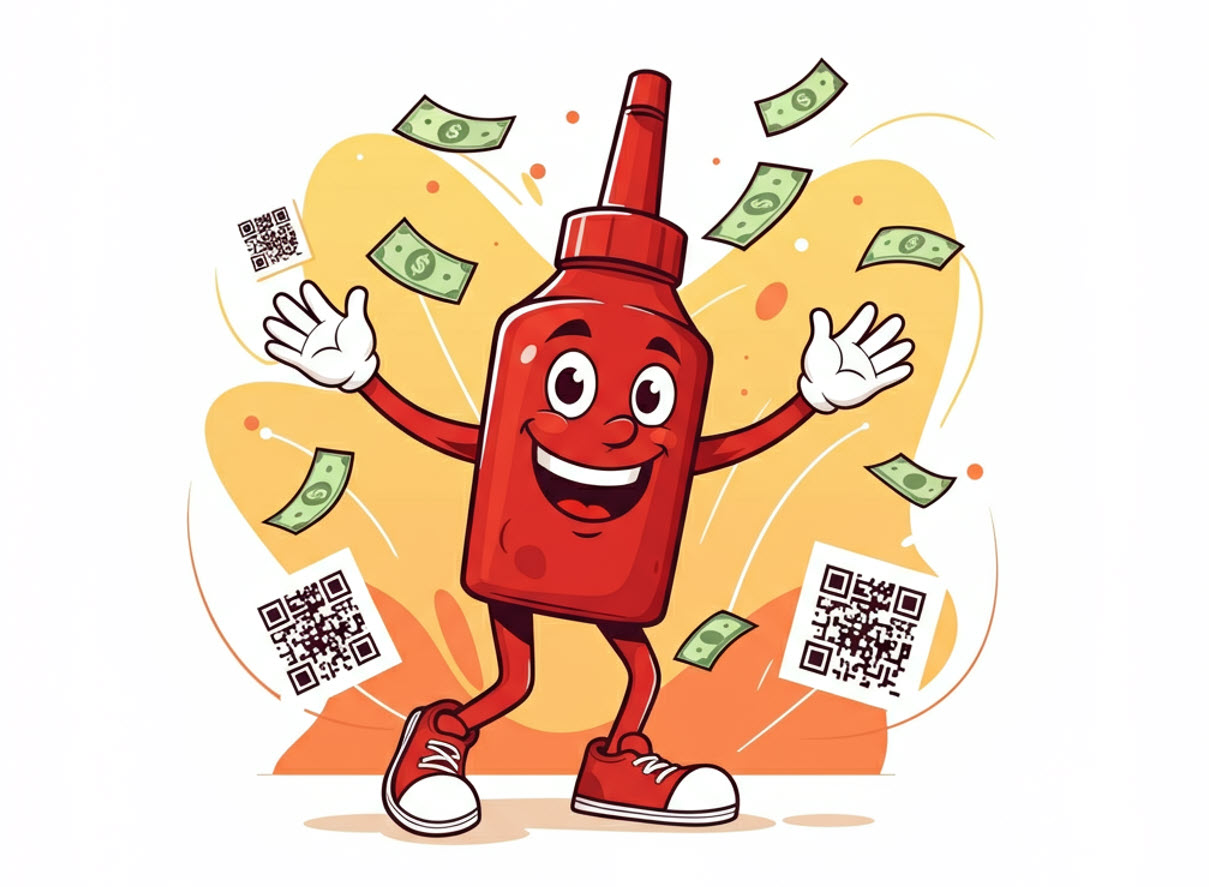Hellmann’s, the renowned condiment brand, has whipped up an entirely new way to engage consumers with their latest “Ketchup Currency” campaign. By combining mobile technology, machine learning, and a touch of humor, the Unilever-owned company is challenging traditional condiment norms while offering consumers discounts and incentives through QR code scans. This digital-forward initiative not only modernizes brand engagement but also sheds light on how technology is reshaping consumer experiences in everyday shopping.
The Mechanics of “Ketchup Currency”
At the heart of this campaign is Hellmann’s clever idea to turn surplus ketchup packets into “currency.” The premise is simple yet ingenious. Consumers use their smartphones to scan a QR code that directs them to a microsite. Once there, they can upload pictures of the unused ketchup packets they’ve amassed over time (yes, even the packets you hoard in your kitchen drawer).
The microsite leverages multimodal machine learning to count the packets in real-time. Depending on the quantity scanned, users are rewarded with digital coupons. Scanning up to nine packets unlocks a $1 coupon for Hellmann’s mayonnaise, while scanning 10 or more nets a $2 discount. But there’s a playful twist – lucky participants who stumble upon “vintage” secret ketchup packets (recognized through optical character recognition) win a year’s supply of mayo. Imagine discovering a golden ticket but in condiment form!
The promotion runs through May 25, 2025, making it a limited-time incentive for consumers to get on board with Hellmann’s unique proposition.
The Benefits of Marrying Technology and Marketing
For consumers, the immediate benefit is financial. Those who participate can snag budget-friendly mayo deals or potentially enjoy a year of complimentary Hellmann’s. But this campaign isn’t just about discounts; it’s about creating experiences. By gamifying the process with playful touches like rare ketchup packet prizes, Hellmann’s taps into consumer delight while fostering brand loyalty.
From Hellmann’s perspective, the campaign is a savvy marketing move to encourage mayo adoption in the U.S., where ketchup traditionally rules. Research from the brand suggests about a third of Americans secretly prefer mayonnaise with their fries but may feel reserved about expressing it publicly. “Ketchup Currency” is Hellmann’s gentle (and fun) way of coaxing people into making the mayo-on-fries crossover.
Beyond that, the technology showcases forward-thinking innovations in consumer engagement. By integrating machine learning and QR code capabilities, Hellmann’s is demonstrating how brands can use digital tools to make mundane items (hello, ketchup stash!) feel relevant and rewarding. It also bridges a gap between physical and digital interactions, showing that something as ordinary as a ketchup packet can spark a tech-powered marketing moment.
Campaign Challenges and Consumer Skepticism
No innovation comes without its hurdles. One challenge lies in consumer compliance with the required steps. While Hellmann’s QR code microsite is designed to be mobile-friendly and intuitive, asking people to pull out their smartphones, scan packets, and upload images could deter less tech-savvy users or those who don’t perceive the rewards as worth their effort.
Trust also factors into the equation. Many consumers might wonder about the privacy implications of uploading images of items from their homes to a digital tracker. Despite the campaign’s light-hearted framing, brands like Hellmann’s must work hard to assure users of data security and privacy protection.
Lastly, there’s always the question of reach. While the campaign leverages influencer partnerships and strategic out-of-home (OOH) ads in cities like Chicago, its ultimate effectiveness depends on tapping into widespread consumer interest. Hellmann’s is already fighting an uphill battle against ketchup’s dominance in the U.S., so public skepticism about mayo’s appeal could tamper participation levels.
Here’s their genius Super Bowl commercial…
A Case Study in Broader Implications
Hellmann’s campaign shines a spotlight on how brands are using technology to elevate engagement. QR codes have seen a resurgence in popularity, particularly since the pandemic normalized touchless technology. This campaign takes QR codes beyond their typical use as passive links and transforms them into interactive, personalized gateways. It’s a strategy that captures consumer attention while incentivizing brand-specific purchases.
It also underscores the rising trend of gamification in marketing. By turning something ordinary, like scanning condiment packets, into a playful mission, Hellmann’s injects novelty into the consumer experience. This approach aligns with broader industry trends where marketers attempt to stand out by blending simplicity with shareable, feel-good moments.
Looking forward, campaigns like this could set a precedent for rewarding consumers in unexpected ways. Grocery chains might expand digital couponing systems to encourage recycling initiatives (imagine scanning old food containers for savings). Retailers may refine the use of camera-based apps to detect products that qualify for points or discounts. These innovations have the potential to alter purchase behaviors by making everyday activities more rewarding and engaging.
A Fresh Approach to Consumer Marketing
Hellmann’s “Ketchup Currency” campaign isn’t just a cheeky poke at ketchup dominance; it’s a testament to how technology can turn a simple condiment into a memorable interaction. By making QR codes and machine learning the central players in the consumer experience, Hellmann’s demonstrates a mastery of combining creativity with technology.
For consumers, it’s a nudge to look at everyday items more playfully. For the marketing industry, it’s yet another example of how brands can thrive at the intersection of innovation and fun. While we may not yet be in a world of ketchup-funded economies, Hellmann’s just proved that even the most mundane objects in our pantry have the potential to spark something extraordinary.

